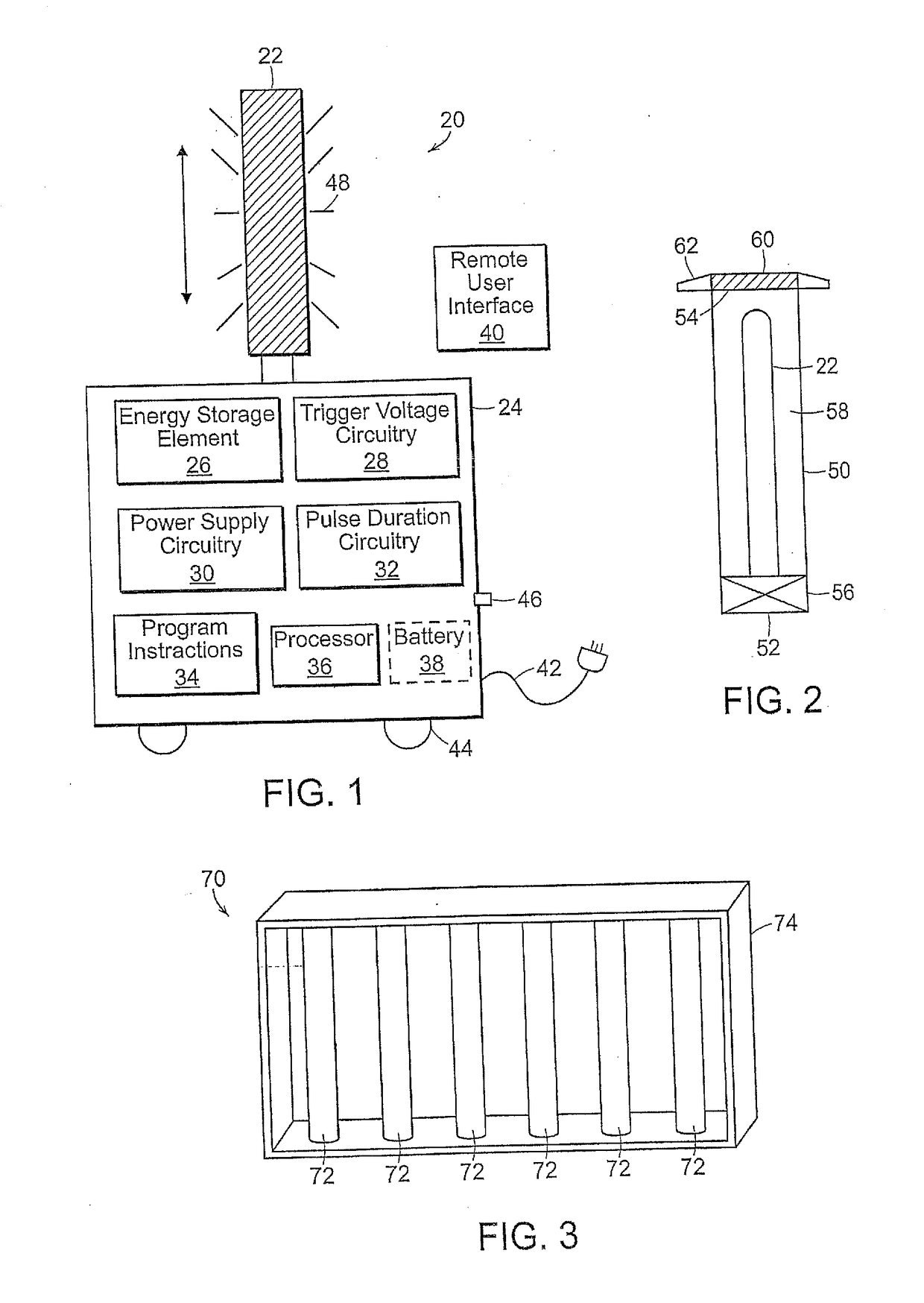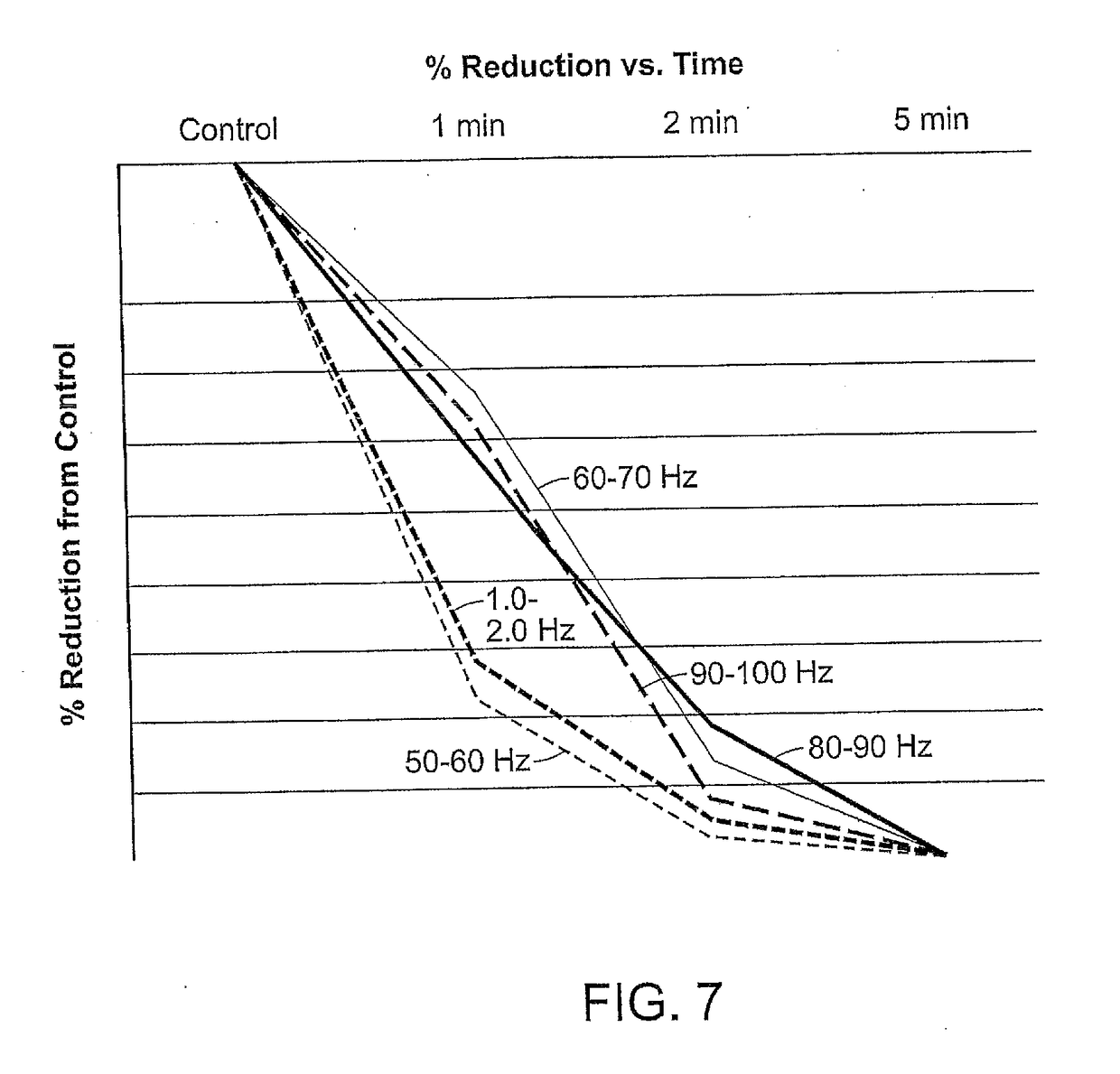Room And Area Disinfection Utilizing Pulsed Light With Modulated Power Flux And Light Systems With Visible Light Compensation Between Pulses
a technology of modulated power flux and pulsed light, which is applied in the direction of disinfection, water installations, construction, etc., can solve the problems of limited power level of area/room disinfection devices utilizing pulsed uv light, limit the power and pulse frequency of pulses, and limit the power of pulses. power and pulse frequency can be optimized, so as to reduce bacterial contamination
- Summary
- Abstract
- Description
- Claims
- Application Information
AI Technical Summary
Benefits of technology
Problems solved by technology
Method used
Image
Examples
Embodiment Construction
[0024]Methods and apparatuses for disinfecting surfaces are provided which generate pulses of light from germicidal light sources at a frequency of greater than approximately 3 Hz. In particular, methods and apparatuses are provided which generate pulses of ultraviolet light at a frequency greater than approximately 20 Hz with significantly lower power flux than pulses of light generated from conventional disinfection apparatuses. Such methods and apparatuses are described in more detail below in reference to FIGS. 1-7. In addition, methods and apparatuses are provided which generate pulses of light including ultraviolet light and visible light from one lamp at a frequency between approximately 3 Hz and approximately 60 Hz and further emit visible light from a separate lamp to insure visible light emitted by the two lamps produces a continuous stream of visible light or a collective stream of visible light pulsed at a frequency greater than 50 Hz. Such methods and apparatuses are de...
PUM
| Property | Measurement | Unit |
|---|---|---|
| frequency | aaaaa | aaaaa |
| wavelength range | aaaaa | aaaaa |
| wavelength range | aaaaa | aaaaa |
Abstract
Description
Claims
Application Information
 Login to View More
Login to View More - R&D
- Intellectual Property
- Life Sciences
- Materials
- Tech Scout
- Unparalleled Data Quality
- Higher Quality Content
- 60% Fewer Hallucinations
Browse by: Latest US Patents, China's latest patents, Technical Efficacy Thesaurus, Application Domain, Technology Topic, Popular Technical Reports.
© 2025 PatSnap. All rights reserved.Legal|Privacy policy|Modern Slavery Act Transparency Statement|Sitemap|About US| Contact US: help@patsnap.com



